A Winter Birding Foray at Olmsted Park
About 15 birders joined me and National Park Ranger Mark Swartz for a walk along Leverett Pond and through Olmsted Park up to Ward’s Pond and back. It was cold and damp following the heavy rains overnight but the group was in good spirits, even though the avian harvest was far from abundant.
We began by searching for the Wood Ducks that have been hanging out on the Boston side of one of the small islands in Leverett. The water was so high from the rains it was hard to find the island! But after a search we did manage to discover a few “woodies” among the sunken shrubbery. Near the end of the walk we were lucky enough to see a beautiful pair close up. The Wood Duck may be the most spectacular native duck in this area:
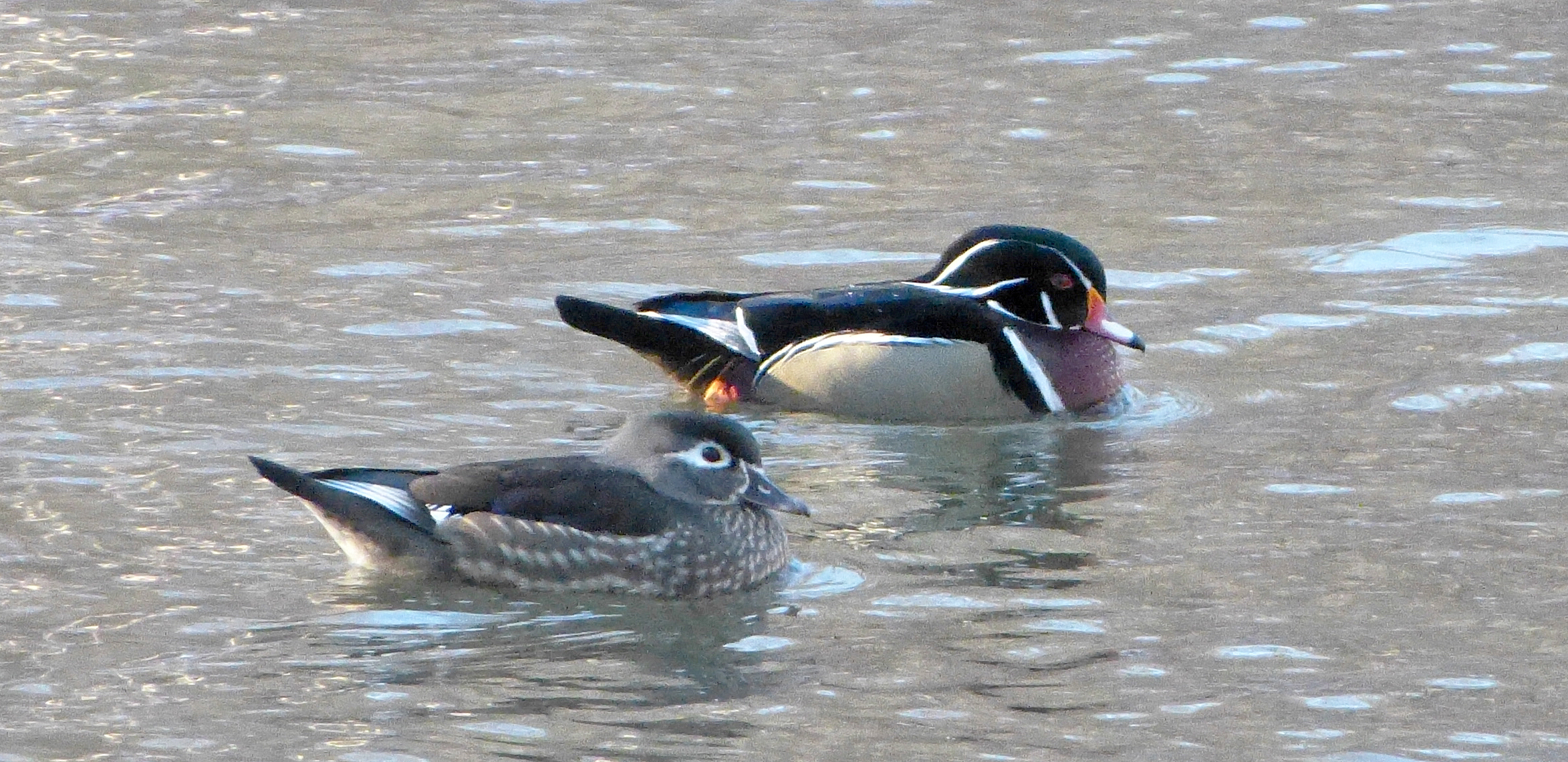
Male (top) and female Wood Ducks Photo: Bob Mayer
As we were admiring the Wood Ducks, several Ring-necked Ducks passed by:
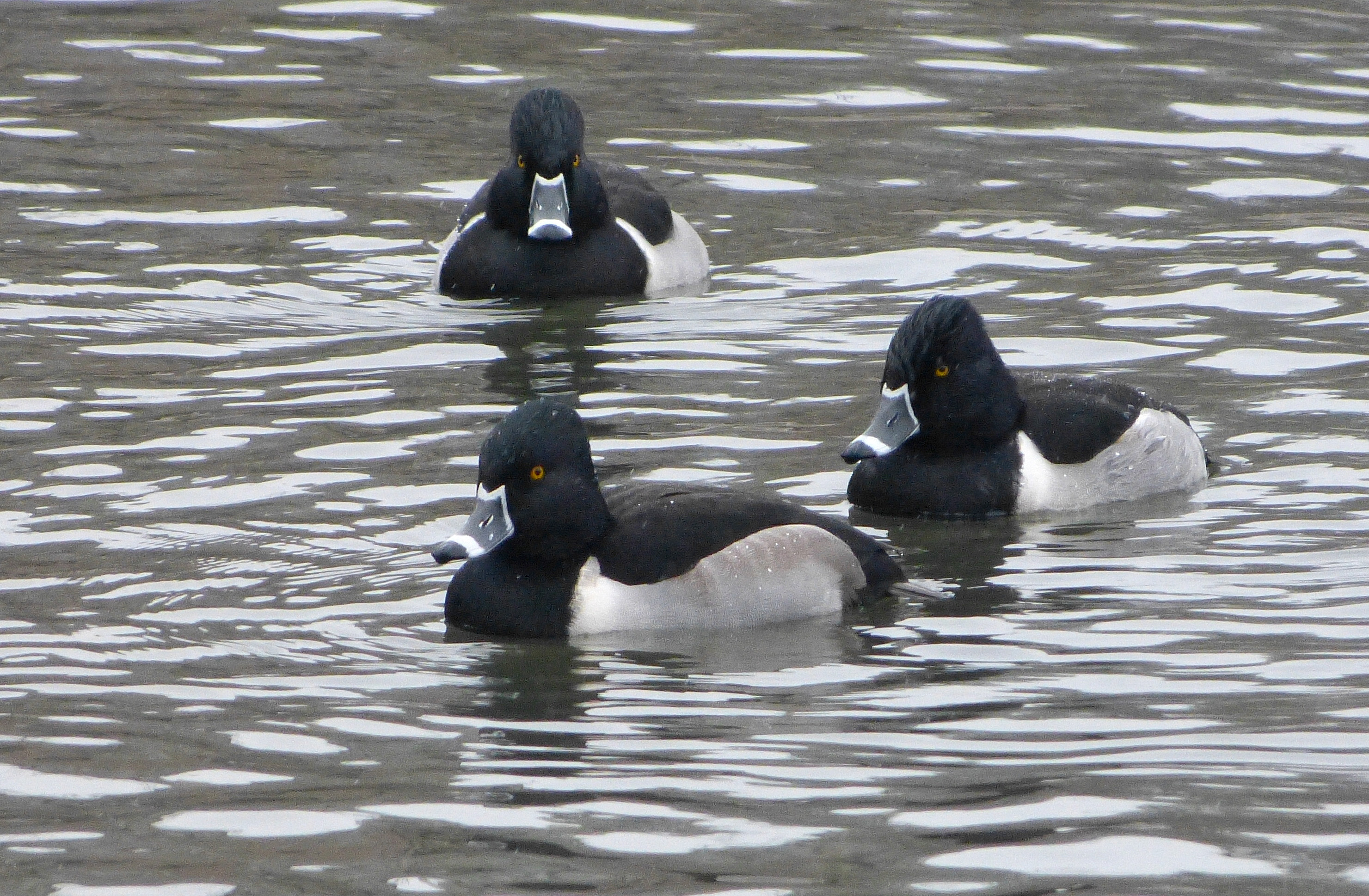
Male Ring-necked Ducks. Why isn’t this bird named Ring-billed Duck? Photo: Bob Mayer
Then someone in the group noticed a pair of Hooded Mergansers hiding in the aquatic undergrowth:
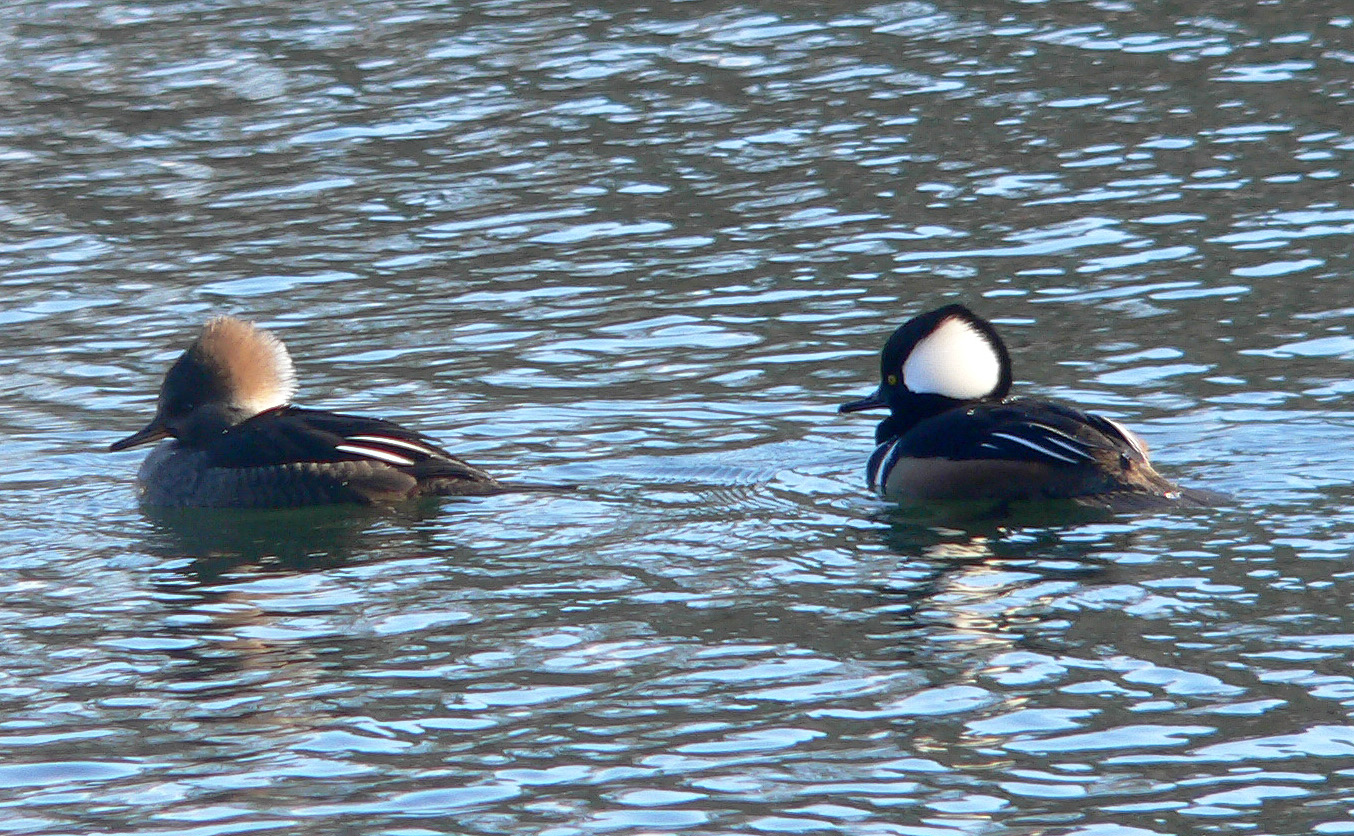
A female Hooded Merganser leading a male. Photo: Bob Mayer
After this hat trick we spent a few minutes comparing female Mallards and American Black Ducks, which can be confusing.
Our search for land birds was disappointing. Other than the usual winter species- robins, titmouses, chickadees, and several sparrow species- we came up short. The youngest member of our group, perhaps ten years old, treated us to his perfect rendition of the call of the Mourning Dove. No real MODO’s responded however. As we circled Ward’s Pond we did have one Hermit Thrush hidden in a tangled bittersweet vine. This is a lovely bird:

Hermit Thrush. The rusty tail and wing primaries distinguish it from other similar thrushes, and it is the only one likely to be seen in this weather. Photo: Bob Mayer
The other nice surprise was two Great Blue Herons hunkered down in the reeds around that pond. Seeing them up close demonstrated how big these birds are:

Great Blue Heron. Judging from the plumage of this bird it is likely a juvenile. Photo: Bob Mayer
Both herons flushed briefly while we were passing by, giving us another view of their impressive size:
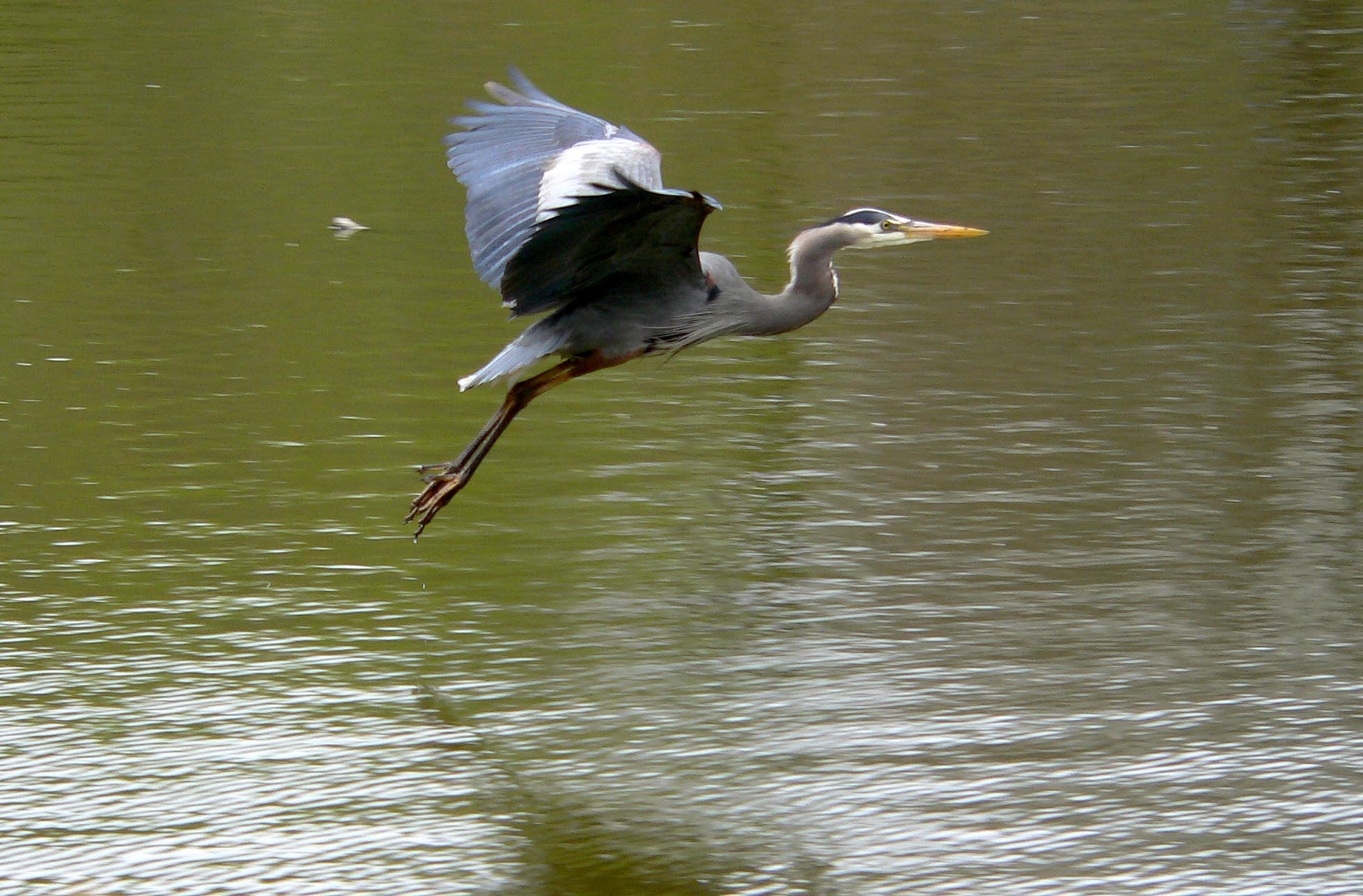
Adult Great Blue Heron Photo: Bob Mayer
A few days before the walk Mark and I made a scouting tour of the area and we located a somewhat uncommon bird at Ward’s Pond. Of course we were anxious to find it for the group, but it was not to be. Winter Wrens are notorious skulkers, hiding deftly in the underbrush. Other birders had reported the wren in this location off and on for at least a month prior to the walk. Perhaps it had moved on, but more likely it was there, watching us listen and search. Here is an image of the bird taken on our scouting trip:
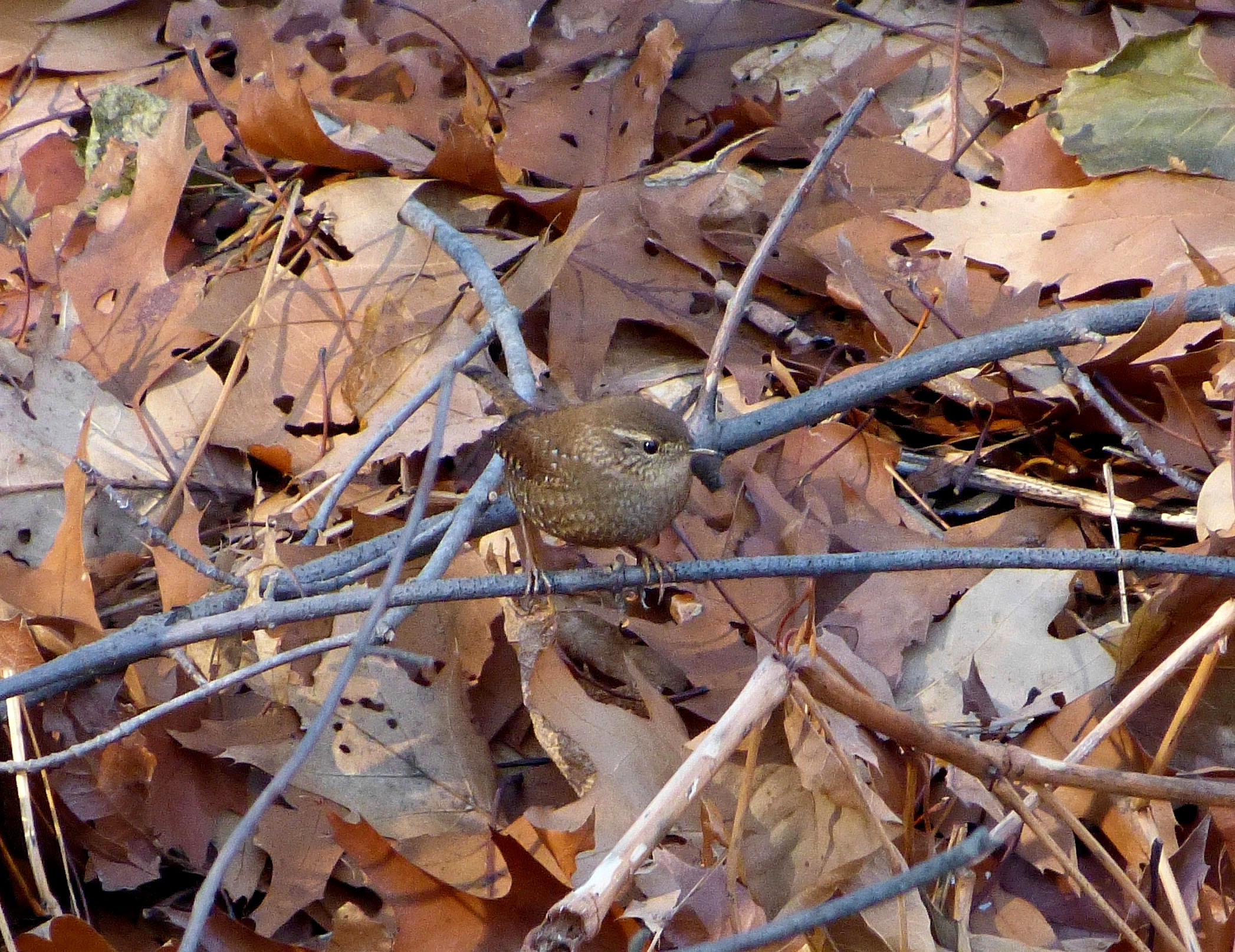
Winter Wren. This bird is only a little more than three inches in length. At nine grams, you could mail three of them with a single first class stamp! Photo: Bob Mayer
This tiny wren carries a big stick when it comes to vocalization however. Here is it’s lovely call (sung mostly in the spring):
Sound recording courtesy of Lang Elliott NatureSound Studio
Here is the meager list from the walk:
Olmsted Park–Leverett Pond, Suffolk, US-MA Dec 7, 2014 9:00 AM – 10:30 AM Protocol: Traveling 2.0 mile(s) Comments: overcast. 30 18 species
- Canada Goose 45
- Wood Duck 5
- American Black Duck 7
- Mallard 60
- Ring-necked Duck 4
- Hooded Merganser 2
- Great Blue Heron 2
- Ring-billed Gull 3
- Blue Jay 2
- Black-capped Chickadee 2
- Tufted Titmouse 5
- Hermit Thrush 1
- American Robin 6
- Song Sparrow 1
- White-throated Sparrow 3
- Dark-eyed Junco 2
- American Goldfinch 1
- House Sparrow 10
View this checklist online at http://ebird.org/ebird/view/checklist?subID=S20830319
This report was generated automatically by eBird v3 (http://ebird.org)
The annual Boston Christmas Bird Count is scheduled to take place this Sunday December 14, and the Jamaica Plain section will begin at 7 AM at Jamaica Pond. If you are interested in joining this all day event you can contact me at rgmayer@comcast.net and I can give you more details.
My next walk is scheduled for early January 2015. Here are the details:
Sunday, January 11, Arnold Arboretum, Boston. This will be an easy two-hour walk from the main gate to Bussey Hill and back, focusing on winter birds as well as admiring the woody plant collection in winter. See the arboretum website http://www.arboretum.harvard.edu for directions and a checklist of birds. Meeting place: Inside the main gate off the Arborway (parking along the Arborway). 9:00 a.m.
I hope some of you can join me.
Good birding!
